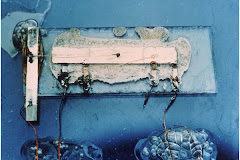Literature and Culture,
ISSN: 1946-1992,
An electronic, international, peer-reviewed, MLA-indexed, EBSCO-distributed journal for studies in Renaissance/early modern literature & culture. APPOSITIONS publishes under a Creative Commons License and is an open-access, independently managed journal. ISSN: 1946-1992. APPOSITIONS will be on hiatus beginning October, 2017.
_____
EDITORIAL BOARD
EDITOR
W. SCOTT HOWARD
Department of English
University of Denver
EDITORIAL ADVISORS
CHRISTOPHER BAKER
Languages, Literature & Philosophy
Armstrong State University
RAPHAEL FALCO
Department of English
University of Maryland,
Baltimore County
ELIZABETH H. HAGEMAN
Department of English
University of New Hampshire
BRETT D. HIRSCH
Centre for Medieval &
Early Modern Studies
University of Western Australia
MATTHEW STEGGLE
Humanities Research Centre
Sheffield Hallam University
SARA J. van den BERG
Department of English
Saint Louis University
ASSOCIATE EDITORS
CHRISTINA ANGEL
Department of English
Metropolitan State College, Denver
ERIK ANKERBERG
Department of English
Wisconsin Lutheran College
CRISTELLE BASKINS
Art & Art History Department
Tufts University
GARY R. ETTARI
Department of Literature & Language
University of North Carolina, Asheville
ANNE GREENFIELD
Department of English
Valdosta State University
JUTTA SPERLING
Social Sciences, History
Hampshire College
AMY D. STACKHOUSE
Department of English
Iona College
ASSISTANT EDITORS
JENNIFER L. AILLES
Department of English
Rollins College
LOUISE DENMEAD
Department of English
University College, Cork
THOMAS J. MORETTI
Department of English
Iona College
_____




_____
APPOSITION:
1. A public disputation by scholars; a formal examination by question and answer; still applied to the ‘Speech day’ at St. Paul's School, London. [1659-60 PEPYS Diary 9 Jan., “My brother John’s speech, which he is to make the next apposition.” 1864 Press 18 June 588, “St. Paul’s School . . . celebrated its annual Apposition on Wednesday.”]
2. The action of putting or placing one thing to another; application. [1541 R. COPLAND Guydon’s Quest. Cyrurg., “Yf after the fyrste apposycyon . . . it blede nat wel.” 1559 MORWYNG Evon. 367, “All suche thinges as . . . fomentacions, apposicions, embroches, etc.” 1650 FULLER Pisgah IV. vi. 117, “By apposition, or putting of sweet odours to the dead body.” 1726 AYLIFFE Parergon 308, “By the Apposition of a Publick Seal.” 1875 POSTE Gaius II. 220, “The apposition of the seals of seven attesting witnesses.”]
3. That which is put to or added; an addition. [1610 J. GUILLIM Heraldry §1. i. (1660) 10, “For distinction sake, to annex some apposition over and above their paternall Coat.” 1655 FULLER Ch. Hist. II. 67, “The Place is plainly written Cern, without any paragogical apposition.”]
4. The placing of things in close superficial contact; the putting of distinct things side by side in close proximity. [1660 STANLEY Hist. Philos. 64/2, “The mistion of the Elements is by apposition.” 1669 GALE Crt. Gentiles I. I. vi. 35, “[The word] according to the various apposition of the leters, may signifie either a foot, or a river.” 1830 LYELL Princ. Geol. (1875) I. II. xix. 488, “These layers must have accumulated one on the other by lateral apposition.” 1850 DAUBENY Atom. The. iv. 121, “The result of the apposition of an assemblage of smaller crystals.”]
5. The fact or condition of being in close contact, juxtaposition, parallelism. [1606 G. CARLETON Tithes Exam. iv. 21b, “There is an apposition betweene things of the same kinde.” a1. 652 J. SMITH Sel. Disc. v. 160, “A mere kind of apposition or contiguity of our natures with the divine.” 1801 FUSELI Lect. Art. (1848), “The true medium between dry apposition and exuberant contrast.” 1824-8 LANDOR Imag. Conv. (1846) 159, “He places strange and discordant ideas in close apposition.” 1878 T. BRYANT Pract. Surg. I. 145, “The cut surfaces and edges of the wounds are to be brought into apposition.”]
6. Rhet. The addition of a parallel word or phrase by way of explanation or illustration of another. Obs. [1561 T. [ORTON] Calvin’s Inst. III. 187, “Calling faith the worke of God, and geuing it that title for a name of addition, and calling it by figure of apposition Gods good pleasure.” a1. 638 MEDE Wks. I. xxiv. 93, “It is an Apposition, or παράθεση, and ειρήνη στη γη, the latter words declaring the meaning of the former; ‘Peace on earth,’ that is, ‘Good will towards men.’”]
7. Gram. The placing of a word beside, or in syntactic parallelism with, another; spec. the addition of one substantive to another, or to a noun clause, as an attribute or complement; the position of the substantive so added. [c. 1440 Gesta Rom. (1879) 416, “Yonge childryn that gone to the scole haue in here Donete this question, how many thinges fallen to apposicion?” 1591 PERCIVALL Span. Dict., “A Preposition . . . either in Composition, as, Contrahecho . . . or in Apposition, as, En la casa.” 1657 J. SMITH Myst. Rhet. 191, “Apposition is a figure . . . whereby one Noune Substantive is for Declaration and distinction sake added unto another in the same case.” 1860 JOWETT Ess. & Rev. 398, “In the failure of syntactical power . . . in various forms of apposition, especially that of the word to the sentence.”]
--OED





No comments:
Post a Comment